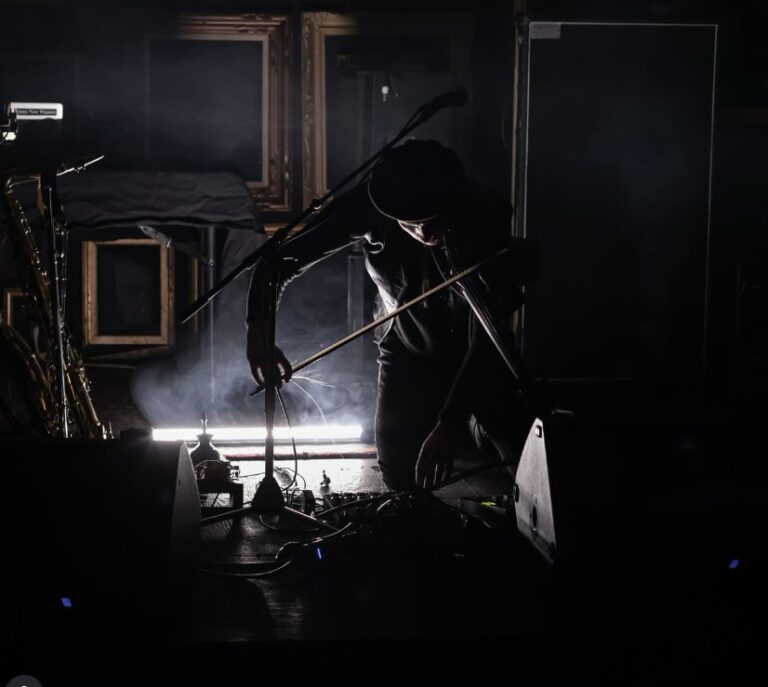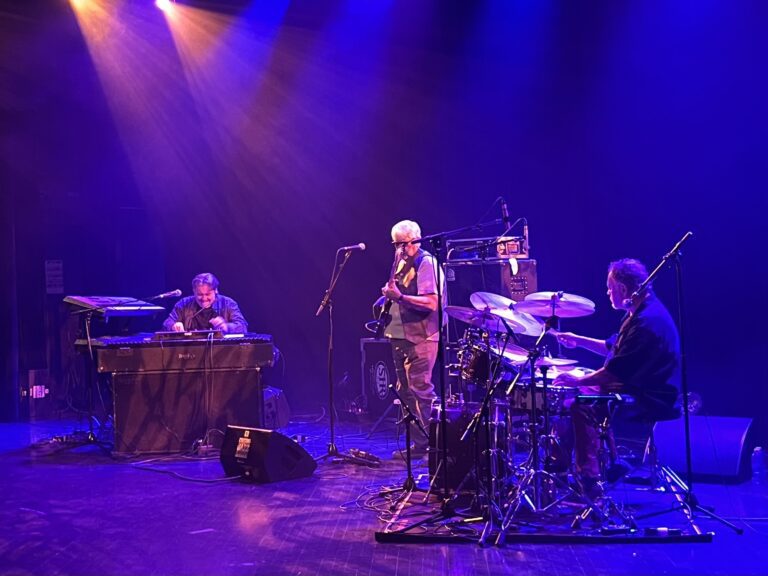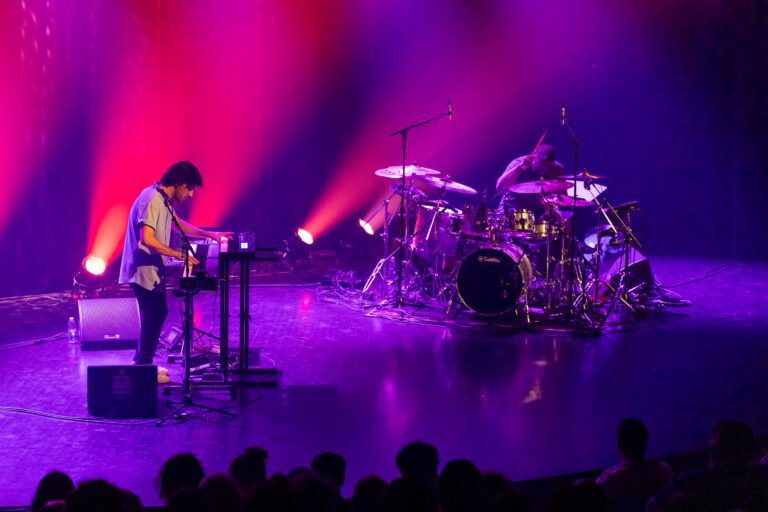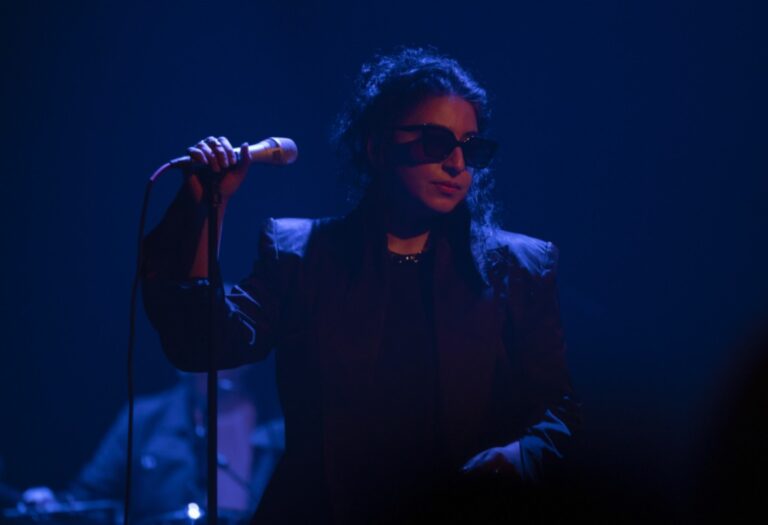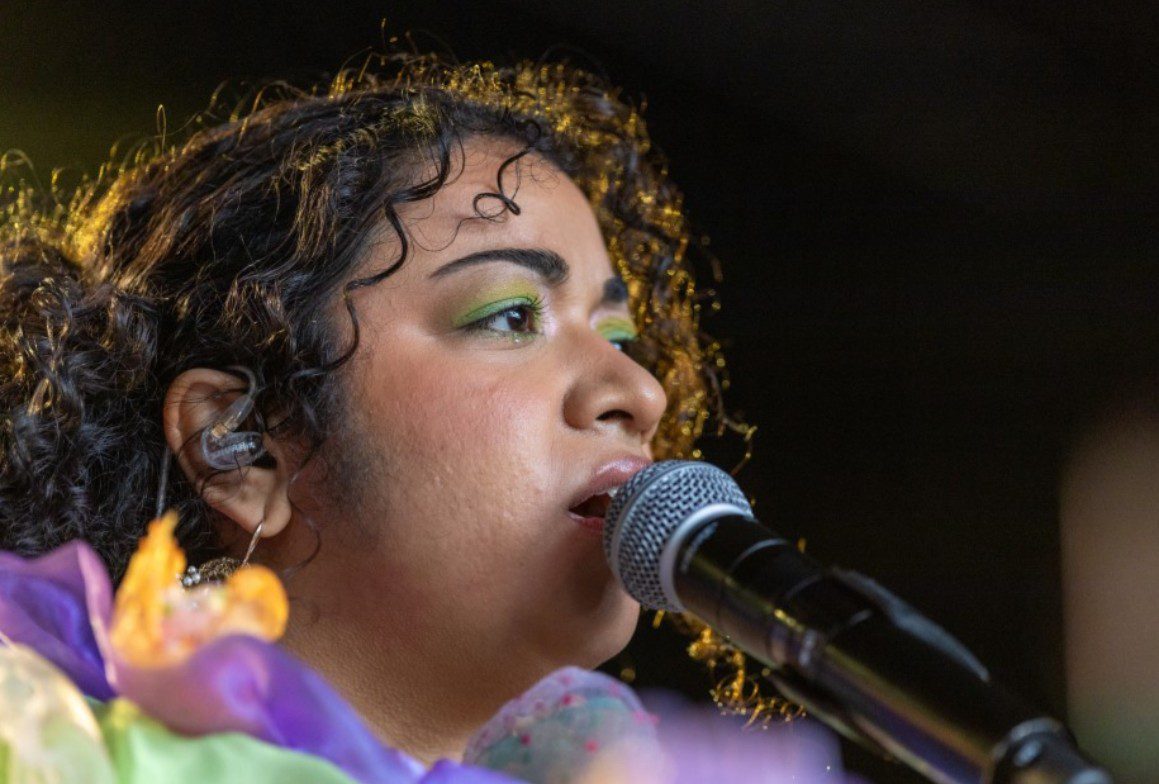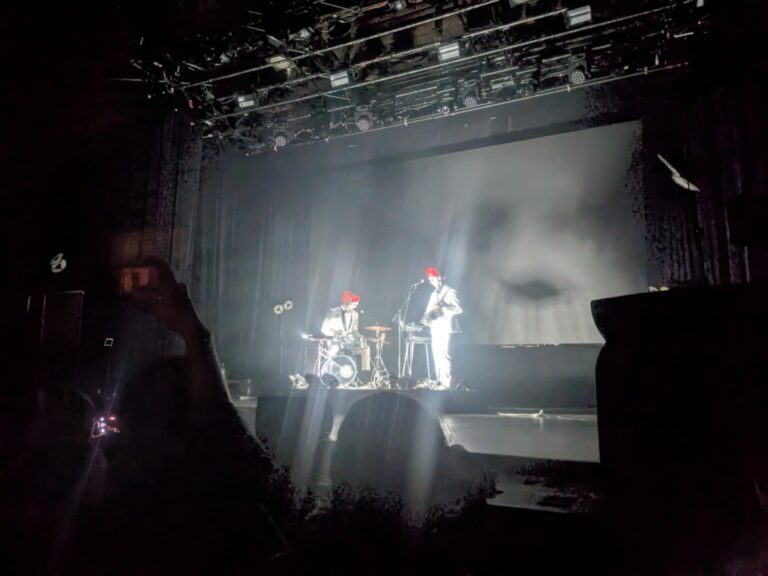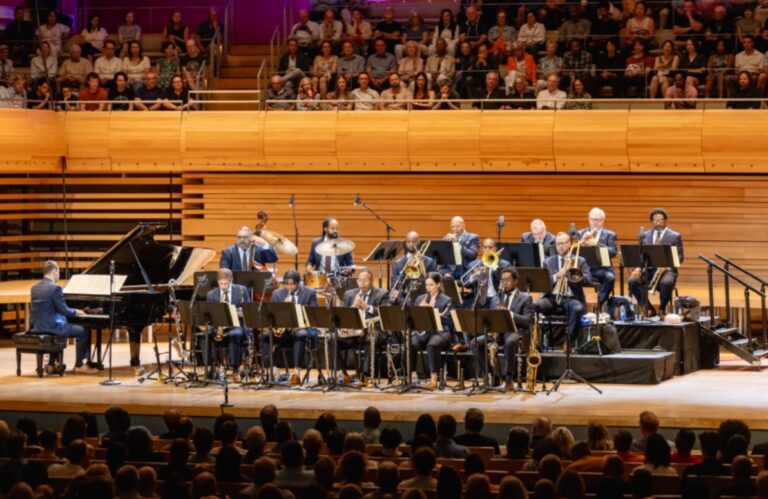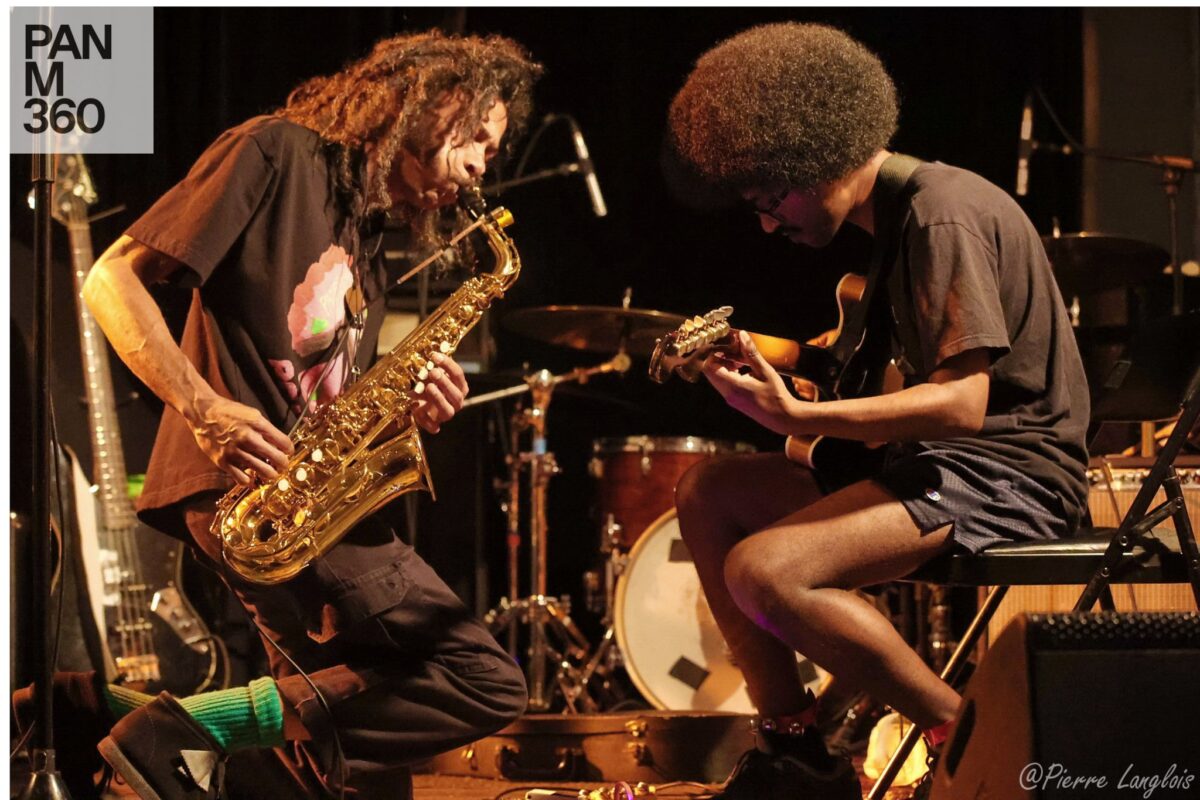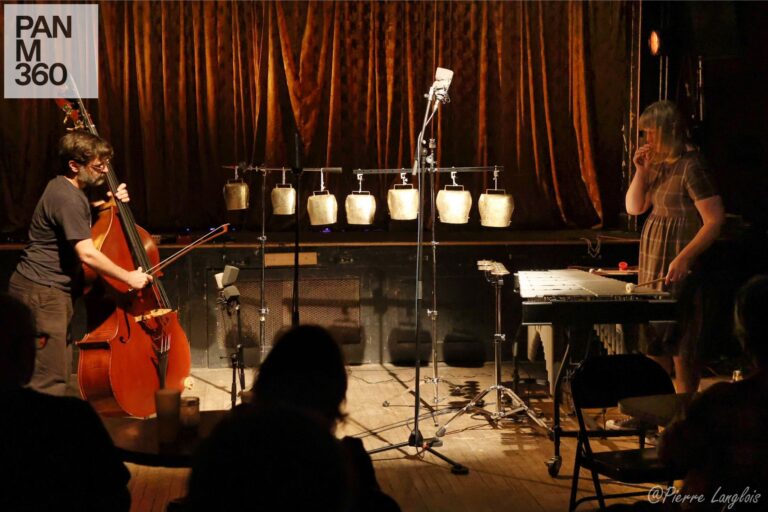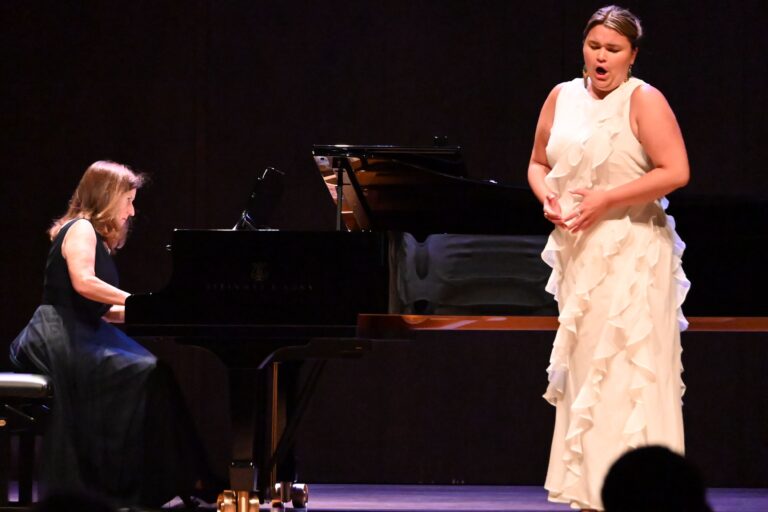Casa opens the doors in a charged, but carefully arranged, blend of dark-folk, neoclassical, noise and post-punk in the hands and voice of Fae Sirois, performing her project Girl Circles – “the art of spite and wxmenly sexual energy,” as she describes.
In a sombre yet intimate setting, Girl Circles is a space of spells and curses, of a very raw confession of embodying one’s own shadows and from there, finding light. Fae Sirois guides us through storytelling, from her raw, scratched violin to a very melodious, lyrical, one organic and tortured machinery, and screamo techniques.
In the midst of all the noise, sharp frequencies traversing the spectrum, whipping feedback – Fae listens attentively. She knows exactly what kind of power she embodies and experiments with.
Second act of the night is served by Ylang Ylang & Così e Così in a performance dedicated to everyone “who [was] present and anyone who spends a lot of time in hospitals.” The vulnerable, piercing poetry of Così e Così couldn’t fit in a better place than the warm bed of synths and thoughtful beats of Ylang Ylang. The duo transports us to the insides of a love letter, or else a sad glitchy flower, curating the soundtrack of the ride – it is soft and warm, melancholic yet comforting and somewhat energizing, nostalgic and so touching.
Trading Places: Un Échange artist-in-residence in collaboration with Suoni brings us Cordelia Donovan, originally from Manitoba and based in Vancouver. Donovan stretches the performative moment to a raw exploration of voice layering, texture and dynamics – she tells us about grief, inviting us to breathe together with and through it.
The headliners Ishi Tishi conquer our hearts and laughs with a playfully inventive set, scooping from the absurd and the slightly provocative while still being real about today’s doom – from keyboard synths, to vocal harmonising and electronic experiments, the trio embraces the weird and awkwardness of being a human in this mess, and does so with such a lightheartedness difficult to leave a place in a bad mood.
